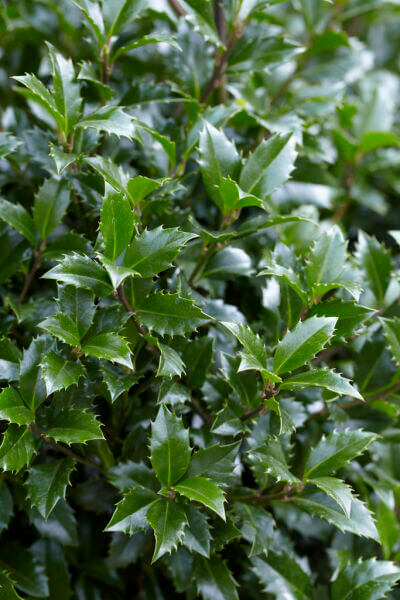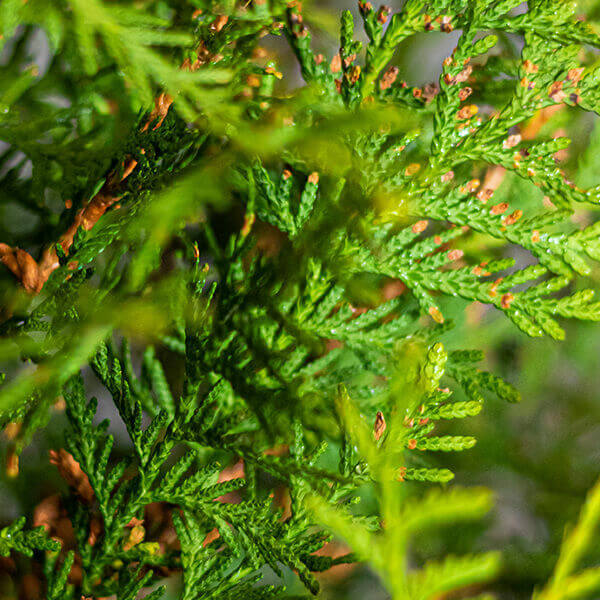Hedge Plants For Screening Neighbors
Boost your garden's attraction with lush hedge ranges such as Yew (Taxus), Thuja, Laurel, Photinia, and Bamboo, celebrated for their structural integrity and ecological advantages.
Yew and Thuja supply evergreen protection and winter durability, while Laurel offers quick growth and broad, fragrant leaves.
Photinia adds seasonal beauty with its dynamic red foliage, and Bamboo provides a low-maintenance, serene atmosphere.
These hedges enhance air quality, decrease sound, and create tranquil, private areas.
Proper planting, spacing, and upkeep ensure energetic development and environmental consistency.
Explore how these lush ranges can raise your garden's appeal and wellness.
Secret Takeaways
Transform Your Garden With Lush Hedge Ranges
- Select Yew for its thick, evergreen growth and unparalleled longevity.
- Opt for Laurel for its quick growth and broad leaves, guaranteeing fast privacy.
- Choose Photinia for its vibrant seasonal foliage, which turns a striking dark red.
- Utilize Bamboo for a low-maintenance, winter-hardy hedge with visual appeal.
- Area plants 2-3 per meter and prune routinely for optimal growth and health.
Popular Hedge Plants
When transforming a garden with rich hedge ranges, it's vital to consider popular hedge plants such as Yew, Thuja, Laurel, and Photinia due to their special characteristics and benefits.
Yew (Taxus) is highly esteemed for its durability and thick, green development, making it a prime choice for withstanding landscapes.
Thuja is kept in mind for its evergreen foliage and robust winter durability.
Photinia adds seasonal vibrancy with red leaves that darken in time, producing vibrant visual appeal.
Laurel offers rapid development and aromatic, broad leaves, suitable for quick privacy.
Furthermore, Bamboo is an outstanding option for atmosphere, using a low-maintenance, winter-hardy alternative that improves the garden's aesthetic with its elegant, swaying canes.
These choices cater to a variety of horticultural requirements and choices.
Benefits of Garden Hedges
Garden hedges use a plethora of benefits, making them an important addition to any landscape. These natural barriers are cost-effective to implement and provide significant wind protection, enhancing air blood circulation and adding to noise reduction. The thick foliage of hedges like Thuja and Beech makes sure privacy by obstructing visibility, developing a secluded and tranquil environment.
Hedges likewise play an essential role in microclimate regulation, supplying a stable environment that cultivates plant development and reduces temperature variations. Their elaborate leaf structures filter pollutants, enhancing air quality and contributing to a much healthier garden community.
Additionally, hedges master sound decrease, taking in and deflecting sound waves to lower ambient sound levels. This double functionality of supplying both acoustic and visual personal privacy enhances the overall harmony and visual appeal of any garden.
Planting and Maintenance Tips
For a successful hedge, careful preparation of the planting location is crucial. Ensure the soil has appropriate pH and drainage to support strong root advancement.
Space the plants properly for the picked species. Water the hedge frequently during its preliminary development stage, changing as required with seasonal changes.
Implement a systematic bug control and illness prevention technique, using chemical or organic treatments when required. Frequently inspect for aphids, termites, and fungal infections.
Apply mulch to maintain moisture and reduce weeds. Seasonal pruning promotes thick development and air circulation, important for plant health.
Following these standards will help you cultivate a dynamic, properly maintained hedge that improves the beauty of your garden.
Spacing and Trimming Guidelines
Spacing and Trimming Guidelines
Appropriate spacing and cutting are important for cultivating healthy, aesthetically appealing hedges. Adequate spacing ensures each plant gets enough nutrients, light, and air flow.
Follow these standards for optimal hedge maintenance:
- Spacing: Position hedge plants 2-3 plants per meter to motivate robust development.
- Pruning Strategies: Routine pruning is essential for maintaining wanted hedge height and shape. Cut new development in summer season and cut back older wood during winter season.
- Seasonal Care: Change cutting schedules and approaches according to seasonal requirements to guarantee plant health.
- Hedge Height: Routinely screen and trim to maintain the desired hedge height and attain uniform aesthetics.
Abiding by these actions will ensure your hedge thrives, enhancing both the appeal and performance of your garden.
Selecting the Right Hedge
Choosing the Right Hedge
Selecting the proper hedge involves evaluating aspects such as mature height, foliage density, and environmental strength. Effective hedge plant selection needs comprehending Additional resources each species' development qualities and site-specific adaptability.
For instance, Yew (Taxus) offers exceptional durability and dense development, while Thuja is notable for its winter season durability. Furthermore, considering upkeep requirements is essential; fast-growing types like Laurel or Privet demand routine trimming, whereas low-maintenance alternatives like Bamboo or Ivy might be more effective for those seeking very little upkeep.
Ecological factors such as soil type, light schedule, and moisture conditions must also direct the choice process. This cautious technique makes sure the picked hedges will prosper, providing both visual and practical advantages to the garden landscape.
Delivery and Planting Guidance
To guarantee your hedge plants grow, they should be delivered by specialized couriers and planted promptly upon arrival.
Follow these vital steps for effective planting:
- Soil Preparation: Enhance the soil with raw material to enhance drain and nutrient content.
- Planting Depth: Create a trench twice the width and equivalent to the depth of the root ball.
- Watering Techniques: Water completely after planting, keeping the soil regularly damp but not filled.
- Mulching: Use a layer of mulch to keep moisture and reduce weeds.
Client Support and Service
Offered the important role of timely assistance in horticultural pursuits, our consumer support team is readily available six days a week through telephone, e-mail, and social networks to offer professional guidance and swiftly resolve any issues. Their commitment to fast reaction times ensures client satisfaction by resolving questions related to plant health, optimum planting techniques, and upkeep schedules.

Response Time
Within 24 hours
Social network
This thorough assistance system, strengthened by a stellar 9.3/ 10 consumer ranking, highlights our dedication to improving the gardening experience for every customer.
Often Asked Questions
For How Long Does It Take for Hedge Plants to Develop?
Hedge plants typically need one to three years to end up being completely developed, with the precise duration varying by types and growing conditions.
Effective care throughout this critical period is necessary for robust growth. Constant watering, vigilant weed control, and suitable fertilizer application are pivotal in promoting strong root development.
For instance, fast-growing species like Laurel may develop faster, while slower-growing ranges such as Yew might take longer. Persistent upkeep accelerates the establishment process, resulting in healthy and thick hedges.
What Are the very best Hedge Plants for Personal Privacy?
The concern of the very best hedge plants for personal privacy includes assessing evergreen and deciduous options.
Evergreen hedges like Thuja, Laurel, and Cypress supply year-round coverage, guaranteeing constant privacy.
On the other hand, deciduous hedges such as Beech use seasonal privacy, shedding leaves in chillier months.
Secret maintenance suggestions for personal privacy hedges consist of routine trimming, fertilizing in spring, and appropriate spacing-- normally 2 to 3 plants per meter.
In addition, constant watering and diligent weed removal are crucial for promoting healthy, dense growth.
Can Hedge Plants Attract Wildlife to My Garden?
Yes, hedge plants can attract wildlife to your garden by providing essential benefits like shelter, food, and nesting sites, thereby enhancing regional biodiversity. Yew, holly, and laurel are exceptional for attracting birds, while ivy supports a variety of bugs.
However, it is necessary to keep in mind that there are some downsides, such as increased upkeep to handle pests and regular maintenance. Thoroughly choosing and maintaining hedge ranges can assist balance these drawbacks and advantages, ultimately fostering a sustainable and dynamic community in your garden.
Are There Any Blooming Hedge Plants Available?
Yes, there are flowering hedge plants offered that can enhance the appeal of your garden.
For example, Elaeagnus, also referred to as Olive Willow, produces fragrant white flowers in the fall, including a touch of beauty.
Photinia, another popular choice, showcases lively red leaves that develop into a rich green, developing a dynamic visual result throughout the seasons.
To ensure these plants prosper, it's important to practice proper pruning methods and seasonal upkeep, such as trimming brand-new growth in the summer season and cutting back in the winter.
These procedures will help preserve the health and visual appeal of your flowering hedges.
How Do I Avoid Pests in My Hedge Plants?
To prevent bugs in hedge plants, employ natural insect control approaches and maintain correct hedge care. Introduce beneficial bugs like ladybugs, which prey on hazardous bugs, to create a balanced community.
Frequently inspect your hedges for signs of invasion and immediately get rid of any afflicted parts to prevent the spread. Ensure the health of your hedges by applying balanced fertilizers and offering appropriate water.
Make use of mulching to maintain soil wetness and proper spacing to reduce plant stress and promote robust growth. These practices collectively help in lessening insect concerns and keeping a healthy hedge.
Conclusion
In essence, picking the ideal hedge ranges such as Yew, Thuja, and Laurel can change any garden into a relaxing haven. These plants offer year-round greenery, enhance aesthetic appeal, and deal useful advantages like noise reduction and wind protection.
Proper planting strategies, precise spacing, constant watering, and seasonal trimming are vital for optimum development.
Trustworthy delivery services and expert customer assistance ensure a seamless experience from purchase to planting, making it simpler than ever to elevate your outside area.
Garden hedges use a plethora of advantages, making them a valuable addition to any landscape. These natural barriers are cost-effective to implement and provide substantial wind security, enhancing air blood circulation and contributing to noise decrease. The thick foliage of hedges like Thuja and Beech guarantees privacy by blocking exposure, developing a remote and serene environment.

Pruning Techniques: Regular pruning is essential for maintaining desired hedge height and shape. Cut brand-new development in summertime and cut back older wood during winter.